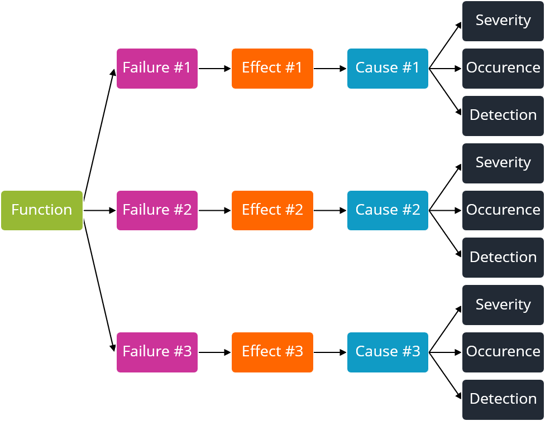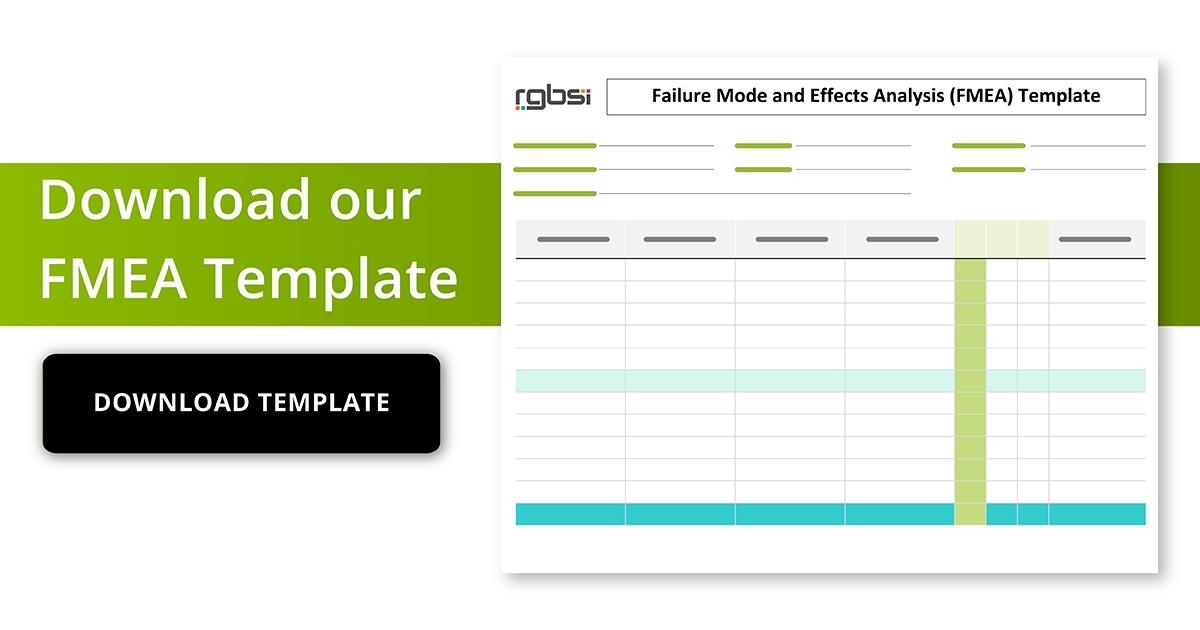
Design Failure Mode and Effects Analysis (DFMEA) is used to detect potential design failures of parts before they can make a significant impact on the end users of a product and the business distributing the product. A design flaw in just one part of a whole can have a domino effect leading to an extensive product recall. This can really set back for company financially. That is why it is important to invest in DFMEA processes to avoid liability from design failures.
The primary objectives of DFMEA is to identify potential product failures associated with a part that could cause:
- Product malfunctions
- Shortened product lifetime
- Safety hazards while using the product
DFMEA is used throughout in the preliminary stages of the design process before a product goes into production. DFMEA allows designers to report uncertainties associated with potential failure modes inherited from a part’s design. This information can be used to mitigate risk and find alternatives to counteract defects. Design teams are able narrow down concepts in developing the most resilient part design.
10 Step DFMEA Process
1. Review the design
Identify the part, its relation to other parts, and the product as a whole. Identify the part's intended function by benchmarking similar parts or using lessons learned from previous design reviews.
2. Potential failure mode(s)
Identify all ways that the part could fail in performing its intended function. This includes failures related to warranty or field failures.
3. Potential effects of failure(s)
if the identified failure(s) were to occur list the impact it would have on the end user, the product as a whole, or the business.
4. Potential causes of failure(s)
Identity the elements of design that contribute to potential failure(s).
5. Assign a severity ranking
Assign a severity ranking 1 (low risk) – 10 (dangerous) to each of the identified potential failures as a consequence of it actually occurring.
6. Assign an occurrence ranking
Assign an occurrence ranking from 1 (least likely) – 10 (extremely likely) to each failure based on the likelihood it will fail.
7. Assign a detection ranking
Assign detection rankings based easiness of detection before failure happens. (1 easy detection – 10 extremely difficult to detect)
8. Calculate the RPN (risk priority number)
S x O x D=RPN 1 (low) – 1000 (high risk). Make a determination if the calculated number is acceptable for the failure being analyzed.
9. Develop an action plan
Detail process controls and detection methods to decrease the RPN and implement them into the process.
10. Recalculate the RPN
Once failure control methods are in place, recalculate the RPN to measure any improvements.
How does DFMEA connect function, failure, effect, and cause?

DFMEA allows design teams to fine-tune their designs during PPAP before production and reduce the likelihood of part failure from occurring. The DFMEA method provides a framework with tangible numbers to conceptualize the seriousness of potential failure and impact of its occurrence on dependent variables.
About RGBSI QLM Solutions
Looking for help with DFMEA, PPAP, or other quality areas? At RGBSI, we provide full service quality lifecycle management (QLM) solutions that optimize manufacturing supply chain initiatives. Organizations within automotive, aerospace, and other engineering segments leverage our expertise to validate, manage, and assess their current processes.











